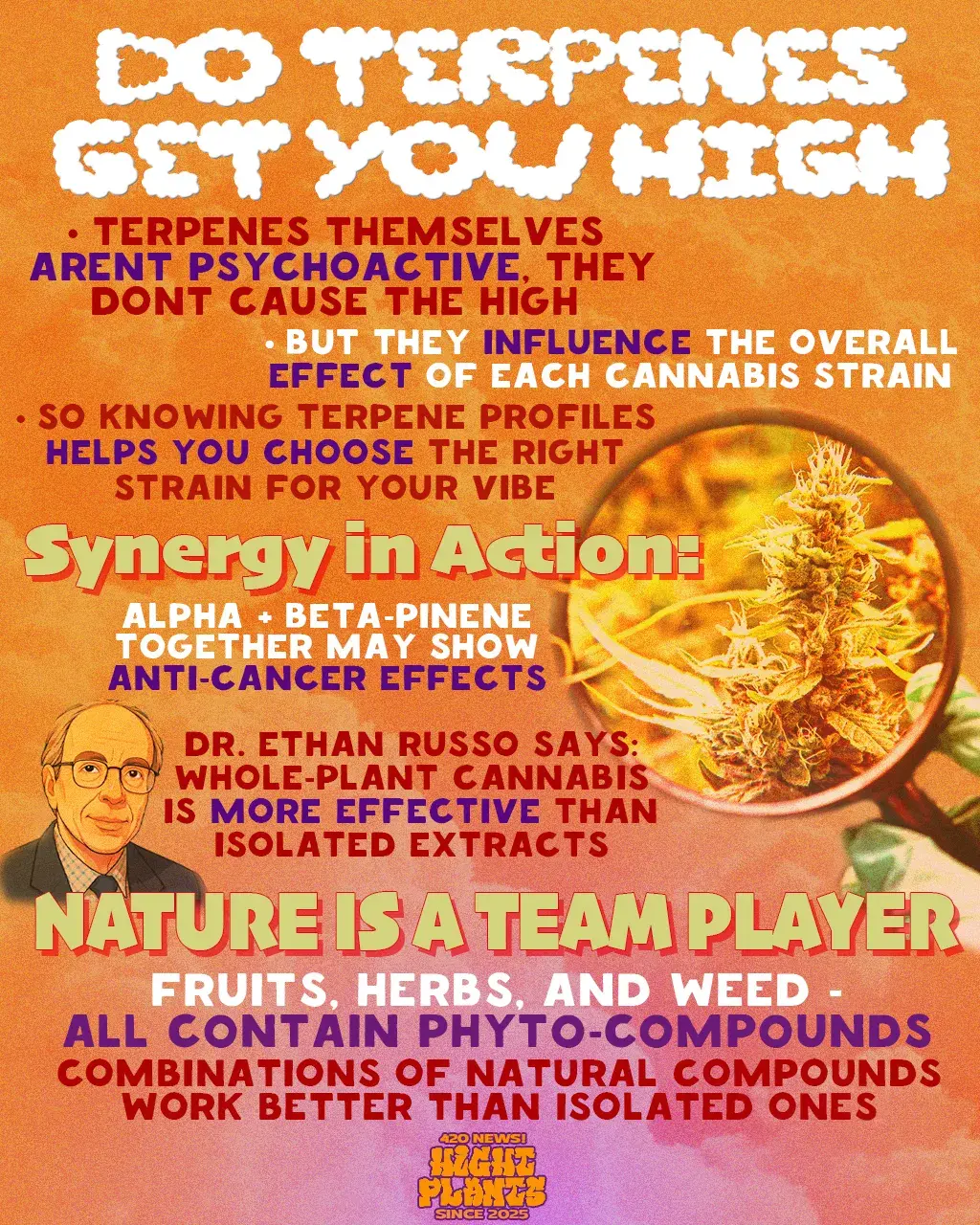Terpenes and the Entourage Effect

These days, you hear a lot about the “entourage effect” in cannabis — but what is it, and why does it matter? The entourage effect plays a big role in cannabis’s therapeutic benefits, and interestingly, it’s closely tied to unique chemical compounds responsible for the plant’s smells and flavors.
What are terpenes?
One of the coolest things about cannabis is its aroma and taste, and that’s all thanks to terpenes. Whether you’re smoking flower, dabbing concentrates, or vaping your favorite strain, terpenes give it that signature flavor — citrusy, diesel, woody, piney, skunky, coffee-like, spicy, herbal, or tropical.
Lots of popular strains even get their names from their smell and taste:
- Blueberry — sweet citrusy blueberry flavor
- Sour Diesel — strong fuel-like scent
- Cheese — unmistakable cheesy aroma
But terpenes do more than just flavor your cannabis — they actually boost the effects of other compounds, affecting both body and mind. It’s the synergy between cannabinoids, terpenes, and other compounds that creates the entourage effect.
How terpenes work in your body
Cannabis has hundreds of molecules that interact with our bodies. Cannabinoids like THC and CBD are pretty unique, but other compounds like flavonoids and terpenes also affect our receptors.
Terpenes:
- Are the main components of essential oils.
- Are produced by many plants — from pine trees to citrus fruits.
- Give cannabis its distinctive smells.
Cannabis can produce over 200 terpenes, and each strain’s unique combo shapes its aroma. A few key points:
- Terpenes evaporate first when heated.
- Flavors come out best when vaping, since burning destroys many compounds.
- Terpenes and terpenoids are different: terpenoids are modified (oxidized) terpenes, usually after drying or curing.
Do terpenes get you high?

Terpenes don’t cause a psychoactive “high” themselves, but they strongly influence how a strain feels. Knowing a strain’s terpene profile helps you pick the one that suits your needs.
Some examples:
- Alpha- and beta-pinene show anti-cancer properties when combined.
- According to Dr. Ethan Russo, whole-plant cannabis works better than isolated extracts.
Think about fruits, veggies, and herbs — they have many phytochemicals that work better together than separately.
Important: isolated terpenes give flavor and smell, but don’t get you high.
Why the combo works better
Here’s why cannabinoids and terpenes together make a bigger impact:
- They can increase the blood-brain barrier permeability.
- They change how THC binds to CB1 receptors.
- For example, alpha-pinene can reduce THC-induced short-term memory loss.
Other examples:
- A 2013 study showed limonene has antidepressant and anxiety-reducing effects.
- Different compounds hit multiple inflammation pathways at once.
- Terpenes may improve cannabinoid absorption.
- And some data suggest that negative THC effects (like anxiety) get reduced when combined with CBD or certain terpenes.
The entourage effect: everyone plays a part
The name “entourage effect” might make you think THC or CBD is the star and everything else is just background. But really:
- There are tons of cannabis chemotypes.
- Many strains have rich profiles where every compound counts.
Think of it like an orchestra:
- THC and CBD are the conductors,
- Terpenes and minor cannabinoids are the instruments,
- Together, they create a harmonious composition.
That’s why full-spectrum products work better. This goes for THC and CBD alike — the entourage effect works in both cases.
Cannabis works best when all its natural parts — cannabinoids, terpenes, flavonoids — interact. This teamwork is the core of the entourage effect, making cannabis a powerful, finely tuned plant medicine.
